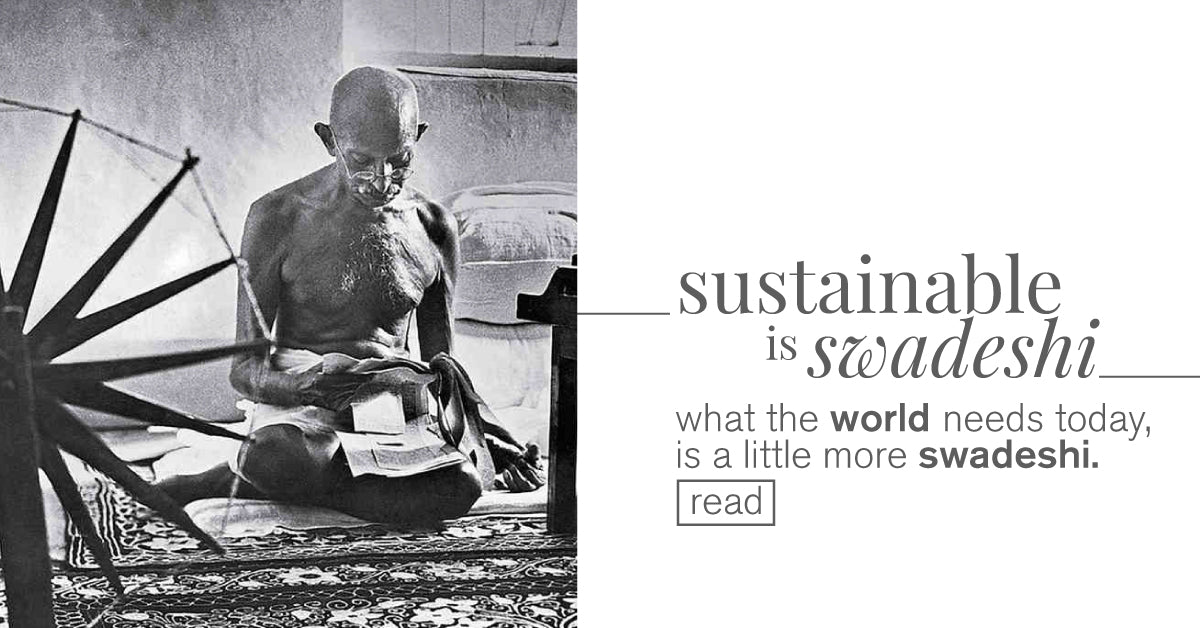Swadeshi means just as much today, as when the Father of our Nation first conceived it.
It started out as a movement to liberate us. A chance to take the reins of our destiny in our own hands by spinning our own yarn.
But Swadeshi has always been in our nature. As a self-sustaining civilization, India has been home to the birth, rebirth and evolution of nearly 100s of handloom weaves - each revealing stories and aesthetics of sub-cultures and peoples across the country. Nearly 4.3 million people are supported by the handloom industry alone.
The History
Recognizing the power of handloom and craft, the First Swadeshi Movement was begun by leaders like Dhadhabai Naoroji and Tilak during the 1800s in Maharashtra. And later in response to the partition of Bengal by Lord Curzon, by the likes of Sri Aurobindo Ghosh.
Spinning, was an act that symbolized strength and the reclamation of power no matter which part of the country you were in.
Recognizing this power of self-sustainability Gandhiji gave shape to the swadeshi movement, as we know it today, uniting the country behind an idea, and action that truly made a difference.
And then came industrialization, globalization, privatization.
The Need of the Hour
Today, most artisans struggle to make ends meet despite having a skill that once liberated us and that gave us our own identity.
The irony is that today, the whole world needs their skills to develop products that are sustainable, environmentally-friendly, and produced with a low carbon footprint.
Globalization therefore needs to be re-invented to include swadeshi. For the betterment of the artisans, and the world.






Leave a comment